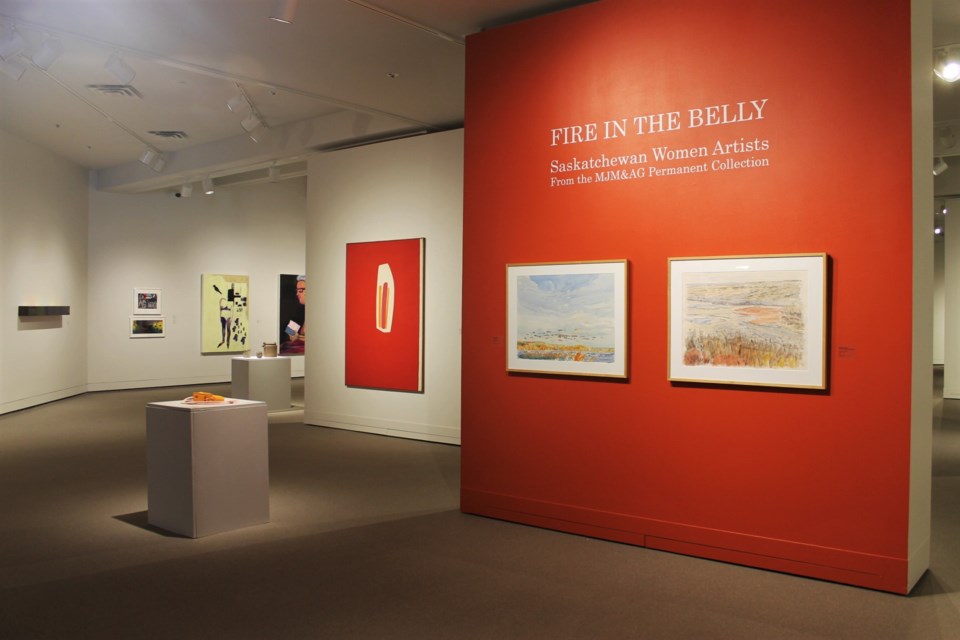The Moose Jaw Museum & Art Gallery (MJM&AG) held its annual general meeting (AGM) on April 28, the highlights of which were their Leadership Award from SK Arts, the diversity of their exhibitions and programming, and the successful adaptations to the pandemic.
2021 was the 55th year of operation for the MJM&AG. In May 2021, at the Sask Arts Award, it received the Leadership Award – Organization in recognition of its many years of diversity and inclusion in programming, its exhibits, including those that have successfully toured as far away as Sydney and Tokyo, and its involvement with the wider Saskatchewan arts community.
Judy Quon, MJM&AG’s board chair, thanked curator and director Jennifer McRorie for “her professionalism and for her caring, tireless, adept leadership.” She also thanked the staff for their hard work, dedication, and professionalism.
A significant retirement occurred in December as the MJM&AG bid farewell to long-time preparator Vivian Barber, who spent 23 years with the organization. Quon wished her well on behalf of the board. McRorie said that Barber’s expertise and care had contributed greatly to the professionalism and quality of the programming the organization offers and thanked her for her “obvious love for the collection.”
McRorie said in her remarks that the pandemic had driven unprecedented adaptations for the MJM&AG. Exhibitions had to be cancelled or postponed, visitors restricted, and the facility shut down for a period. McRorie and her staff looked for opportunities to be creative and responsive to relevant issues. They chose to focus on the equity of culturally diverse groups as a “front and centre” issue.
“We focused on the work of women artists from Indigenous, settler, newcomer, culturally diverse, and LGBTQ2SIA+ communities, to address gender equity as well as cultural
equity. The result was the exhibition Fire in the Belly,” McRorie said.
Fire in the Belly: Saskatchewan Women Artists was unveiled in February 2021 and used pieces from the museum’s permanent collection to showcase the work of female Prairie artists from the 1960s to now, including Indigenous and LGBTQ2SIA+ artists.
McRorie noted at the time that female artists are still underrepresented, underpaid, and underacknowledged compared to their male counterparts.
The MJM&AG saw great success in adapting its educational programming online. They partnered with Seniors’ Centre Without Walls for over-the-phone group art classes; Inclusion Saskatchewan, This is M3, and Moose Jaw Families for Change for the innovative CREATEabilities programming for children and adults who are neurodiverse or have special needs; the Multicultural Council for summer camps for newcomers; Wakamow Aboriginal Community Association for National Day for Truth and Reconciliation programming; and partnered with the Moose Jaw Cultural Centre to co-present I do not have my words, which explored the loss of Indigenous language due to deliberate colonial efforts such as the residential school system.
Last year also saw international attention brought to the discovery of hundreds of unmarked graves at residential schools throughout Canada, leading to a display on the steps of St. Andrew’s United Church that united the community in support and mourning. More 500 pairs of children’s shoes, stuffed animals, and other reminders of childhood innocence are now part of the MJM&AG’s permanent collection and on display in the Heritage Gallery.
A review of the MJM&AG’s financial position from 2021 is mixed. The museum and art gallery kept pace with their expenses, even registering a tiny surplus, but was only able to do so because of emergency funding from the provincial and federal governments.
“We’re actually staying afloat after being in a pandemic for two years,” said McRorie. “And it’s, thankfully, due to emergency funds that we were able to access federally and provincially.”
McRorie said the most significant losses have come from being unable to hold their usual fundraisers, particularly Park Art. Their educational programs are also still well below capacity.
However, the MJM&AG saw improvements over 2020. McRorie said that their online innovations, and the increasing community participation in virtual programming, have been an encouraging success.
Read the full report on the Museum & Art Gallery’s website.




